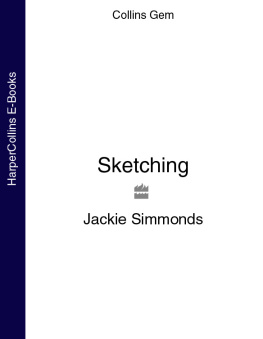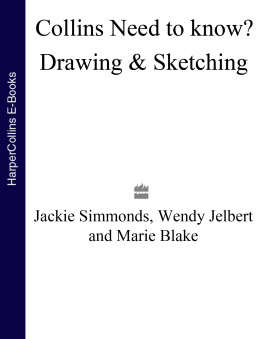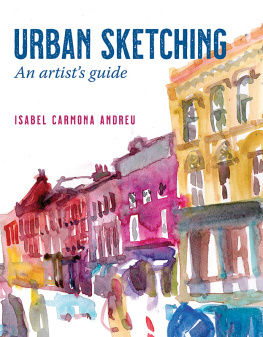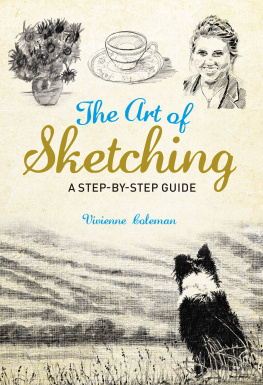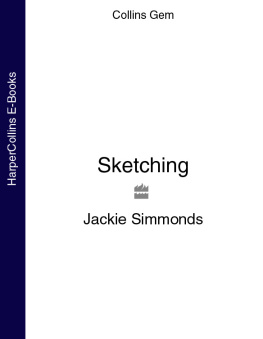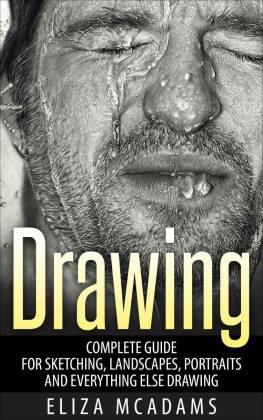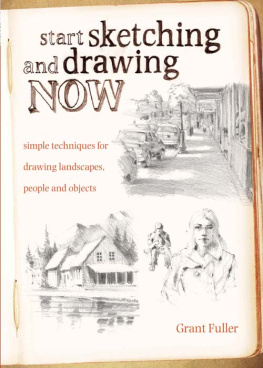
Patricia Rayner
Jackie Simmonds attended art school in the 1970s and has worked ever since as a full-time artist and art instruction author. She exhibits regularly in the UK, and reproductions of her work have been distributed world-wide. She writes articles for The Artist magazine, runs workshops and painting holidays, and has written six art instruction books as well as making six instructional videos.
She has won two major awards for her work, and was recently elected to full signature member of the Pastel Society of America. In 2005, she was featured by The Pastel Journal in the USA. Although pastels is her favourite medium for full-scale paintings, she uses all media for her sketches. She travels widely for her subject matter, producing finished works on location and in the studio. Jackies work can be seen on her website, www.jackiesimmonds.com, and she can also be reached by email through the website.
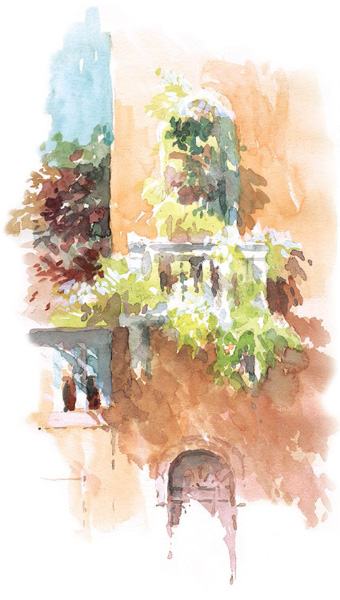
Venetian Balcony
15x10cm(6x4in)
This image was used later for a full-scale painting of the subject, in pastels, because there was plenty of information to use.
The most obvious sketching tool is a pencil. Graphite pencils are graded - 9H is the hardest whereas 9B is the softest. I suggest that you try an HB, a 2B and a 4B. The softer pencils will give you greater sensitivity of line and richer darks. Some graphite pencils are now watersoluble,allowing for interesting soft effects when the marks are melted with water.
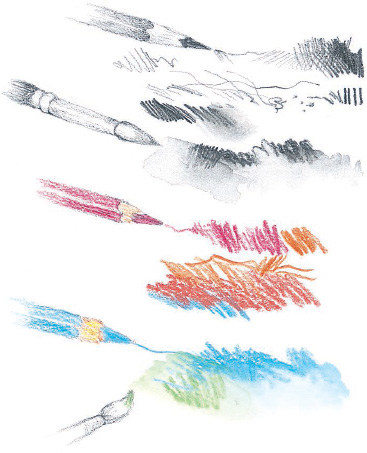
3B graphite pencil
Loosened with water
Watersoluble coloured pencils
Water added with a brush
Charcoal works best on paper with body and slight texture, rather than a very smooth paper. It responds to the lightest pressure and smudges well, but while it can be corrected easily and is ideal for quick sketches it is less good for detail. You can buy charcoal in thin, medium and thick sticks. It is best sharpened on a sandpaper block. A charcoal pencil is cleaner to use and is useful for linear work but, unlike a stick, cannot be used on its side for greater coverage of the paper. Compressed charcoal is a dense form of charcoal stick, which will give a much blacker mark
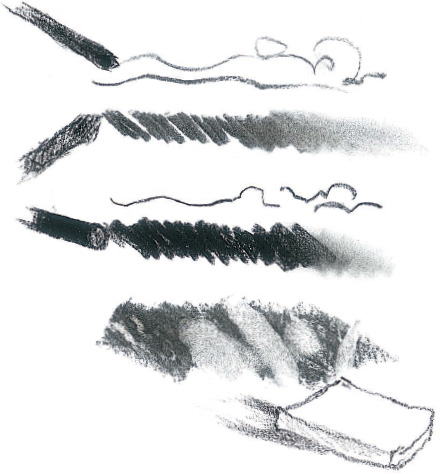
Using charcoal
From the top, these marks were made with regular charcoal (top two rows); compressed charcoal; and putty eraser.
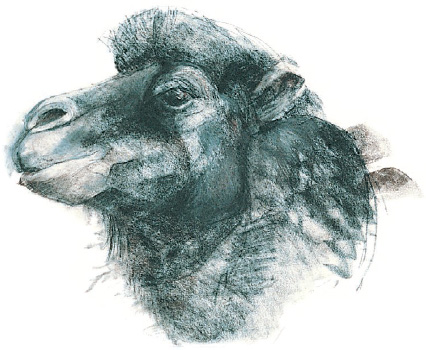
Camels Head
50 x 40 cm (20 x 16 in)
This students drawing was made with vine charcoal and some condensed charcoal.
Cont crayons can be purchased as sticks or pencils. They behave much like condensed charcoal, but the marks are more difficult to erase than charcoal. Cont crayons can be black, white, red (sanguine) or dark brown (bistre), and can be used together on coloured paper for very effective drawings and sketches.
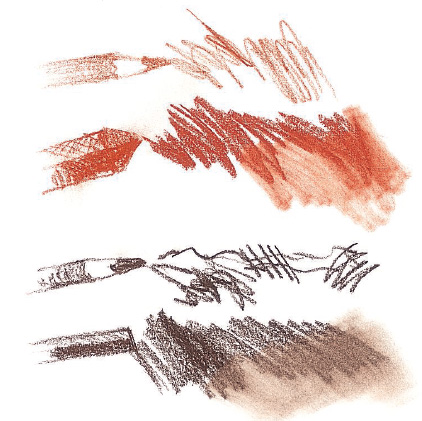
Cont crayons
These marks were made with cont crayons. From the top: sanguine (two rows), and bistre (two rows).
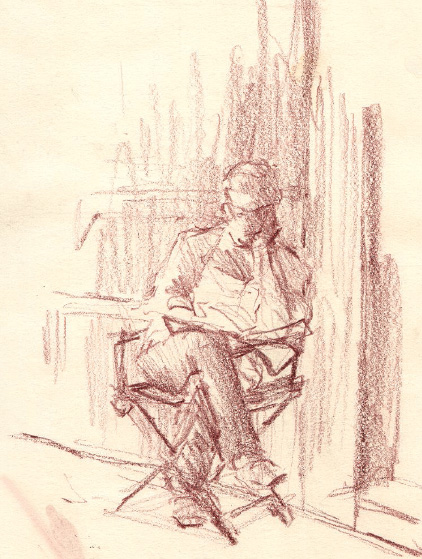
The Grocery Store Owner, Italy
15x10cm(6x3in)
This man sitting reading was captured in a quick sketch on cartridge paper in a sketchbook, using bistre cont pencil.
Pastels can now be purchased either as sticks - hard or soft - or in pencil form. Which you decide to use is a personal choice, but when I use them for sketches, I tend to favour hard pastels - I keep my soft ones for more fully-realized paintings.
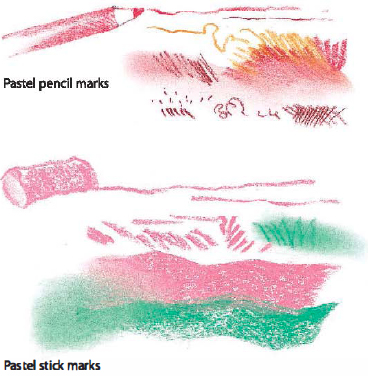
Hard pastel sticks and pencils are great for sketching; you can achieve colourful drawings quickly and easily. A stick has the advantage of great coverage when used on its side. However, all pastel drawings and sketches will need to be fixed or they will smudge.
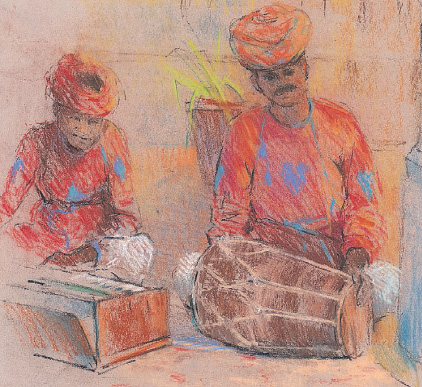
Musicians, India
30 x 30 cm (12 x 12in)
This loose, lively sketch was made quickly on the spot with pastel pencils on pink coloured paper. It has enough information to make the scene come alive in my memory.
Brush pens
In recent years, these have made an appearance in art shops. I favour the ones with a hard tip at one end, and a wider brush tip at the other. This gives great variety of marks, and, to add to the fun, the marks can be dissolved with water.
Watersoluble crayons
These are also lovely to use - on a slightly rough paper, the marks will break up nicely and give an impression of texture. When dissolved with water, the marks melt into delicious washes of subtle colour.
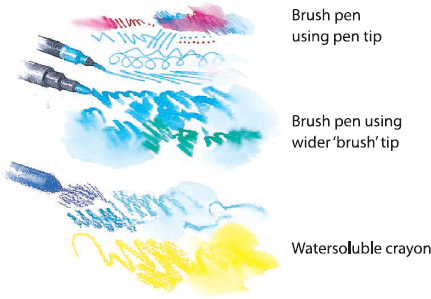
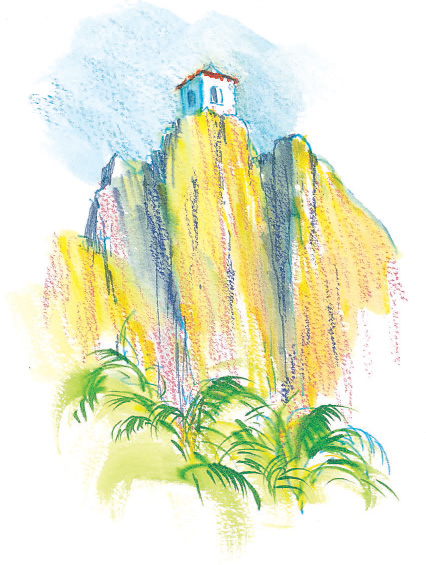
Guadelest, Spain
15 x 10 cm (6 x 3 in)
Watersoluble brush pens were used for the main elements of the image, and the marks partially dissolved with water. To increase the texture of the rockface, pink watersoluble crayon was stroked over the top and left undissolved.
You can use any kind of pen for sketching, including fountain pens and ball points. My favourite sketching pens are the kind with a dipping nib, used with either inks or concentrated watercolours which are sold in bottles, or fine fibre-tipped artists pens. I particularly enjoy a fine-tipped waterproof artists pen which is filled with brown Indian ink. Although the line can be rather monotonous, the ink is a lovely colour softer than black and no bottles of ink are required. However, I sometimes use a sharpened stick which has been dipped in ink it can give blobby results, but these can provide an interesting look. It is best that you try a variety of pens in order to discover which you like the best.
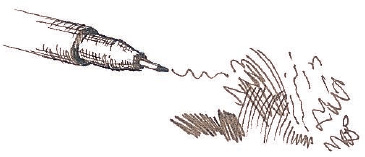
Fibre-tipped gel ink pen
Blocks of tone can be built up with cross-hatching
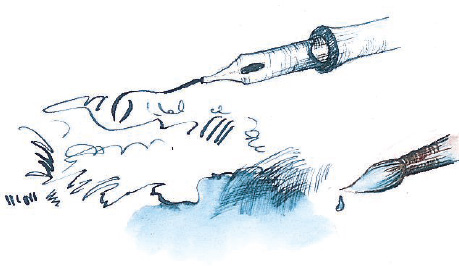
Dip pen with watersoluble ink

